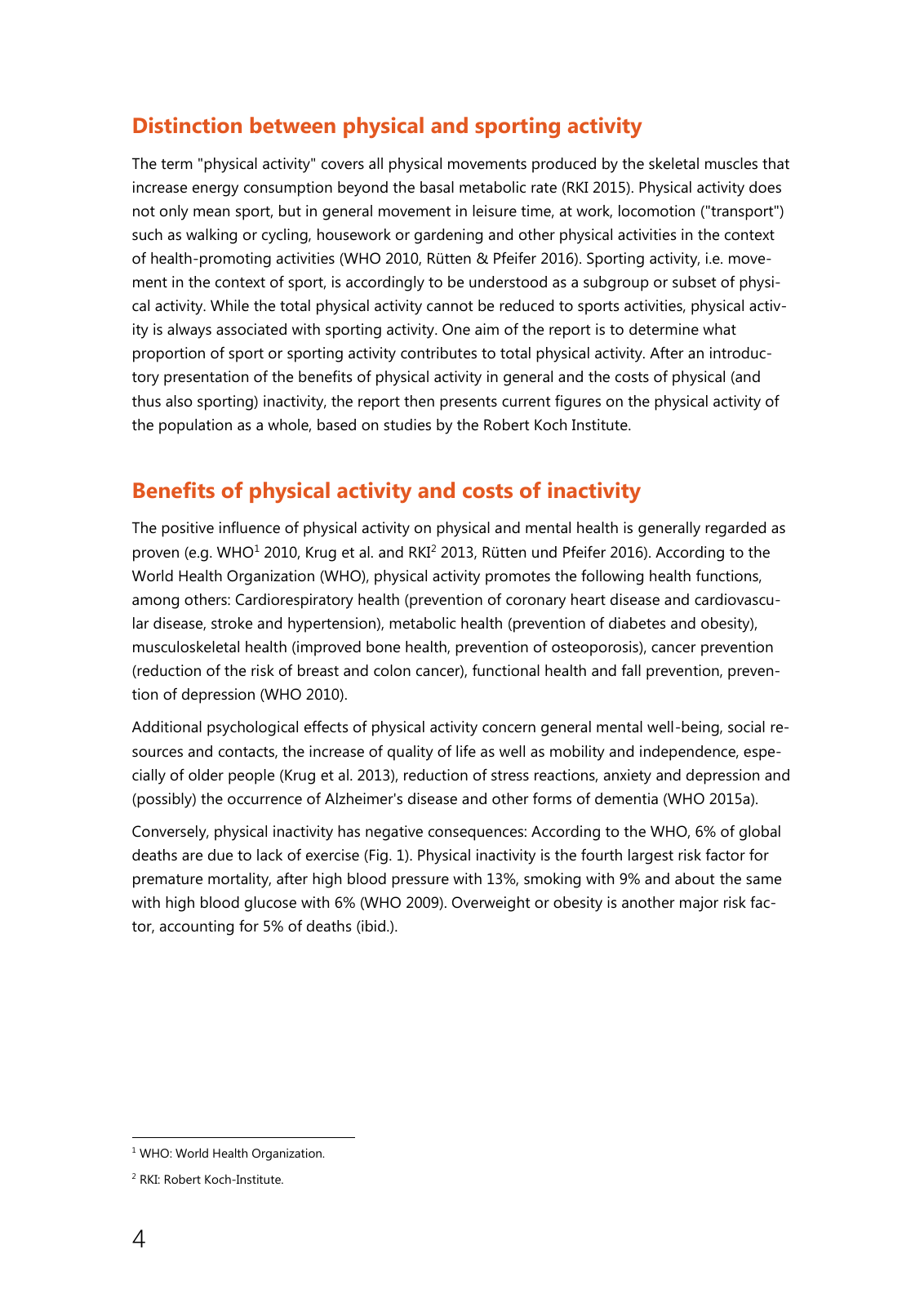4 Distinction between physical and sporting activity The term physical activity covers all physical movements produced by the skeletal muscles that increase energy consumption beyond the basal metabolic rate RKI 2015 Physical activity does not only mean sport but in general movement in leisure time at work locomotion transport such as walking or cycling housework or gardening and other physical activities in the context of health promoting activities WHO 2010 Rütten Pfeifer 2016 Sporting activity i e move ment in the context of sport is accordingly to be understood as a subgroup or subset of physi cal activity While the total physical activity cannot be reduced to sports activities physical activ ity is always associated with sporting activity One aim of the report is to determine what proportion of sport or sporting activity contributes to total physical activity After an introduc tory presentation of the benefits of physical activity in general and the costs of physical and thus also sporting inactivity the report then presents current figures on the physical activity of the population as a whole based on studies by the Robert Koch Institute Benefits of physical activity and costs of inactivity The positive influence of physical activity on physical and mental health is generally regarded as proven e g WHO1 2010 Krug et al and RKI2 2013 Rütten und Pfeifer 2016 According to the World Health Organization WHO physical activity promotes the following health functions among others Cardiorespiratory health prevention of coronary heart disease and cardiovascu lar disease stroke and hypertension metabolic health prevention of diabetes and obesity musculoskeletal health improved bone health prevention of osteoporosis cancer prevention reduction of the risk of breast and colon cancer functional health and fall prevention preven tion of depression WHO 2010 Additional psychological effects of physical activity concern general mental well being social re sources and contacts the increase of quality of life as well as mobility and independence espe cially of older people Krug et al 2013 reduction of stress reactions anxiety and depression and possibly the occurrence of Alzheimer s disease and other forms of dementia WHO 2015a Conversely physical inactivity has negative consequences According to the WHO 6 of global deaths are due to lack of exercise Fig 1 Physical inactivity is the fourth largest risk factor for premature mortality after high blood pressure with 13 smoking with 9 and about the same with high blood glucose with 6 WHO 2009 Overweight or obesity is another major risk fac tor accounting for 5 of deaths ibid 1 WHO World Health Organization 2 RKI Robert Koch Institute

Hinweis: Dies ist eine maschinenlesbare No-Flash Ansicht.
Klicken Sie hier um zur Online-Version zu gelangen.
Klicken Sie hier um zur Online-Version zu gelangen.